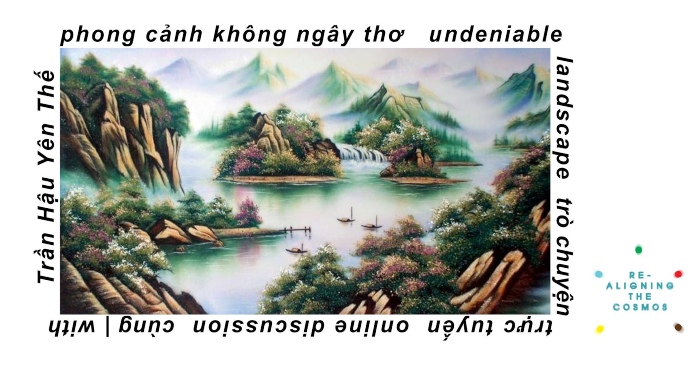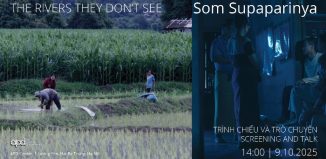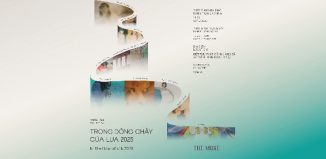Discussion: ‘Undeniable landscape'

Sat 12 Dec 2020, 03 pm – 05 pm
Online event via ZOOM in Vietnamese with English translation
From the organizer:
As a common genre in Eastern and Western art, landscape painting has the ability to express various human perceptions, cultural ecologies, political contexts, and religious beliefs. However, the history of landscape painting in Vietnamese art has not been a subject of dedicated study (particularly in that folk arts such as Đông Hồ, Kim Hoàng and Hàng Trống prints are rarely articulated as part of this genre; or that landscape elements were often relegated as vague backdrops or decorative elements in ancient architecture, in addition to lacking specific attributions to location or place).
This lecture asks how has landscape depiction in Vietnamese painting changed since the beginning of the 20th century? Have there been any notable achievements? Are there any significant topics that need to be discussed? For example, during French colonial times, realist depictions of three-dimensional spaces and the style of Romanticism were furthered thanks to the École des Beaux-Arts-influenced education; subject matter predominantly surrounding the daily life of the upper middle class. Later, as war broke out in Vietnam, art moved towards Social Realism, used in revolutionary propaganda to reinforce nationalistic sentiment, often describing the difficult realities of life during wartime as well as imparting patriotism to the people. On the other hand, a small number of independent artists on the sidelines (typically Bùi Xuân Phái) used landscape to emulate and express an individual’s mindscape and war-induced psyche. Following Doi Moi (economic reforms beginning in 1986), landscapes appeared in art for tourists, and continued to perpetuate the foreigner’s idea of a rustic, peaceful Vietnam. At the same time, experimental artists (from the late 1990s until now), from all over Vietnam, have continuously explored different aspects of Vietnamese society, often in a realist manner that is critical and highly-reflective, questioning the concept of heritage and the consequences of a modernizing and industrializing society. In popular culture today, another phenomenon has arisen: that of the embroidered landscapes, inlaid with gold and silver, made from precious stones or wood, appearing everywhere as decorative objects and symbols of wealth and power.
So, how can we trace the origin of landscape in Vietnamese art and its development, culturally, socially and politically? Can we mark the changes in the visual depictions of landscape based on the linearity of time, through the different art movements and styles; or should we take a different approach? How have different belief systems, ideologies and social expectations of the function of art influenced how landscape becomes not only an undeniable witness, but also a factor in itself, contributing to and triggering social, cultural, and political change? Join art researcher/visual artist Trần Hậu Yên Thế to unpack and discuss the above concerns in this event, as a part of public programs satelliting The Factory’s project Re-aligning the Cosmos
Participating fee:
– Adult: 100,000đ
– Inner Circle member/ Student: 40,000đ
More information about the event and get your ticket here
The event ZOOM link will be sent to you via email starting 2 days prior to the event.
Follow updates on event’s page.













